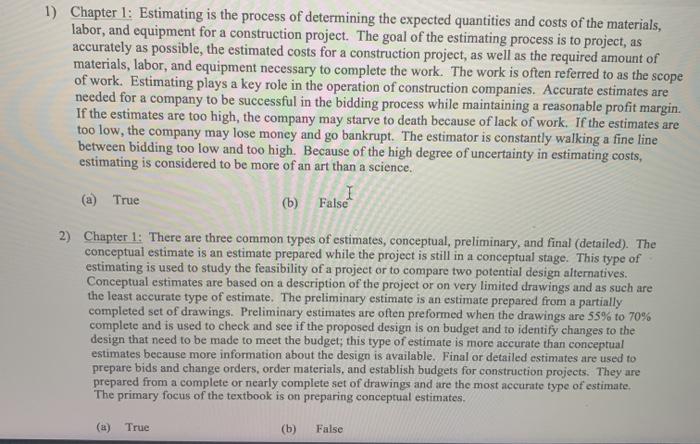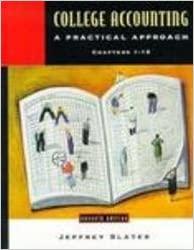1) Chapter 1: Estimating is the process of determining the expected quantities and costs of the materials, labor, and equipment for a construction project. The goal of the estimating process is to project, as accurately as possible, the estimated costs for a construction project, as well as the required amount of materials, labor, and equipment necessary to complete the work. The work is often referred to as the scope of work. Estimating plays a key role in the operation of construction companies. Accurate estimates are needed for a company to be successful in the bidding process while maintaining a reasonable profit margin. If the estimates are too high, the company may starve to death because of lack of work. If the estimates are too low, the company may lose money and go bankrupt. The estimator is constantly walking a fine line between bidding too low and too high. Because of the high degree of uncertainty in estimating costs, estimating is considered to be more of an art than a science. (a) True (b) False 2) Chapter 1: There are three common types of estimates, conceptual, preliminary, and final (detailed). The conceptual estimate is an estimate prepared while the project is still in a conceptual stage. This type of estimating is used to study the feasibility of a project or to compare two potential design alternatives. Conceptual estimates are based on a description of the project or on very limited drawings and as such are the least accurate type of estimate. The preliminary estimate is an estimate prepared from a partially completed set of drawings. Preliminary estimates are often preformed when the drawings are 55% to 70% complete and is used to check and see if the proposed design is on budget and to identify changes to the design that need to be made to meet the budget; this type of estimate is more accurate than conceptual estimates because more information about the design is available. Final or detailed estimates are used to prepare bids and change orders, order materials, and establish budgets for construction projects. They are prepared from a complete or nearly complete set of drawings and are the most accurate type of estimate, The primary focus of the textbook is on preparing conceptual estimates (a) True (b) False







